Polemonium spp.
Jacob’s ladder, Polemonium spp., is a hardy ornamental perennial for USDA Hardiness Zones 3 to 8 that blooms in late spring to early summer in shady locations.
It’s not one flower, but an entire genus in the Polemoniaceae or phlox family that contains 25 species with origins in eastern North America, Europe, and northern Asia.
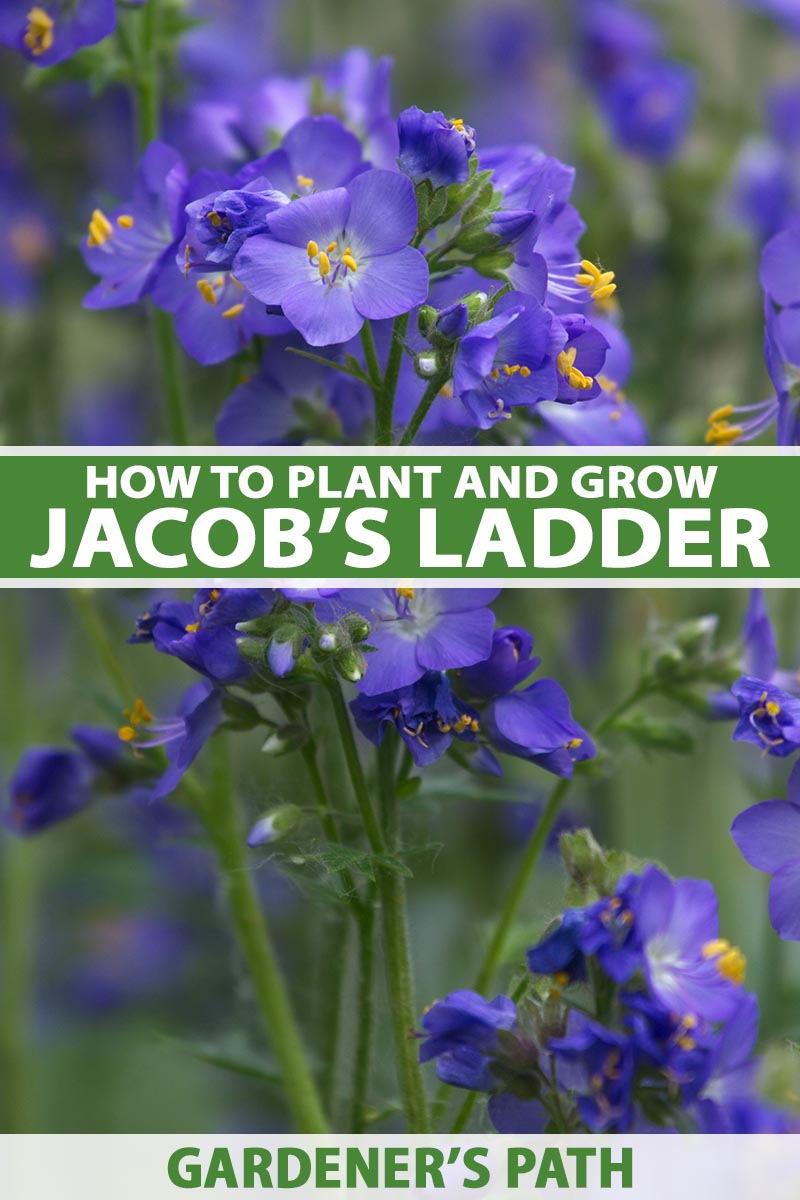
We link to vendors to help you find relevant products. If you buy from one of our links, we may earn a commission.
Native wildflower P. reptans has lavender-blue blossoms. It’s endemic to the eastern United States, but numbers are dwindling.
Per the US Forest Service, it is locally extinct, or extirpated, in New Jersey; endangered in Pennsylvania and Maine; and threatened in Maryland, New York, Vermont, and West Virginia.
Because P. reptans and other species native to the United States are at risk of extinction, non-native, P. caeruleum, in shades of dark blue and white, has been introduced to the US and extensively bred by botanists for use in the home garden.
In addition to these true species, cultivated varieties are available in a color palette that includes blue, pink, purple, and white petals, as well as variegated foliage.
Like sentinels, the upright stems of this colorful perennial rise tall to welcome spring and make way for summer.
In this article, you will learn all you need to know to cultivate Jacob’s ladder in your landscape.
What You’ll Learn
If you have cool, shady spots begging for early-season color, read on for a perennial that delivers!
Cultivation and History
Jacob’s ladder species are found in woodland regions beneath canopies of trees and along streams, where the earth is moist and the air is cool.
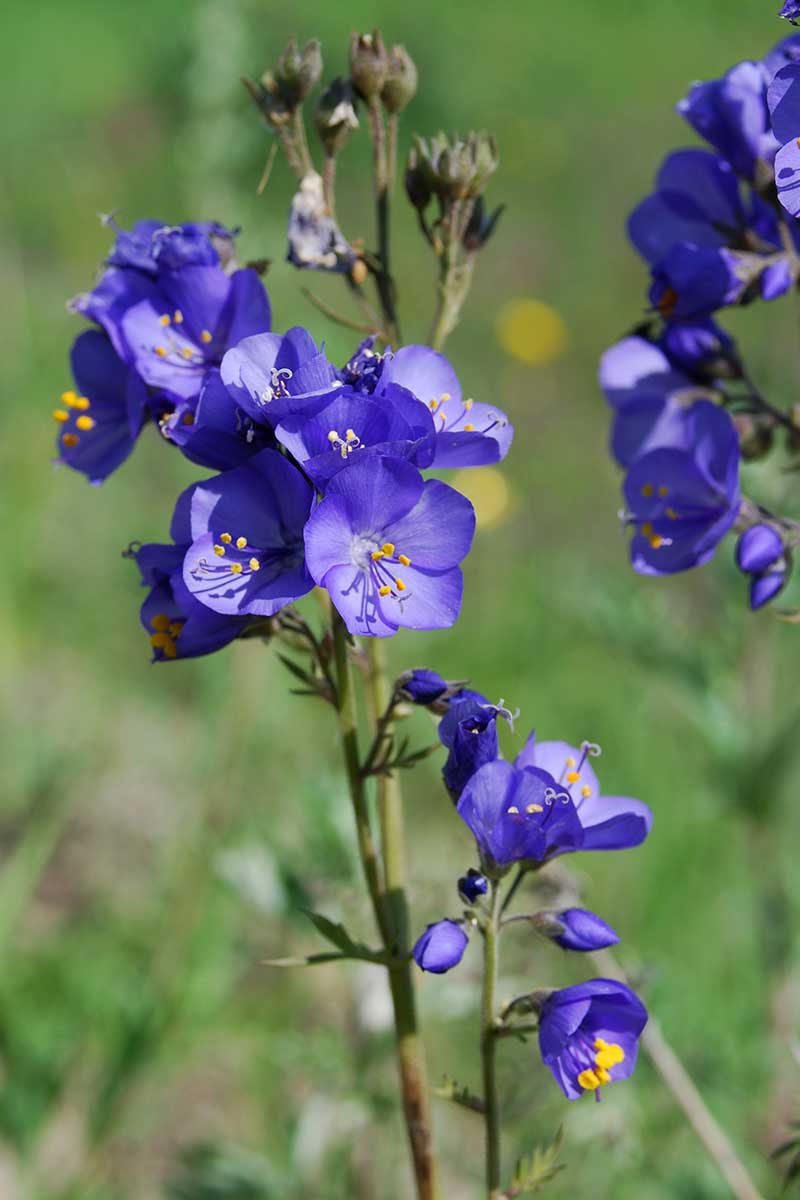
They are often referred to as “ephemerals,” because they have a short growing season, die to the ground, and disappear.
They grow from fleshy food-storage units called rhizomes, rising straight up and forming clumps of basal foliage that is either green or variegated green and white, elliptic in shape, and smooth.
Flowers measure approximately three-quarters of an inch long and consist of terminal pendant clusters of downward-facing, cup-like blooms with five rounded petals and bright yellow stamens.
Post-bloom, capsules form that contain several seeds.
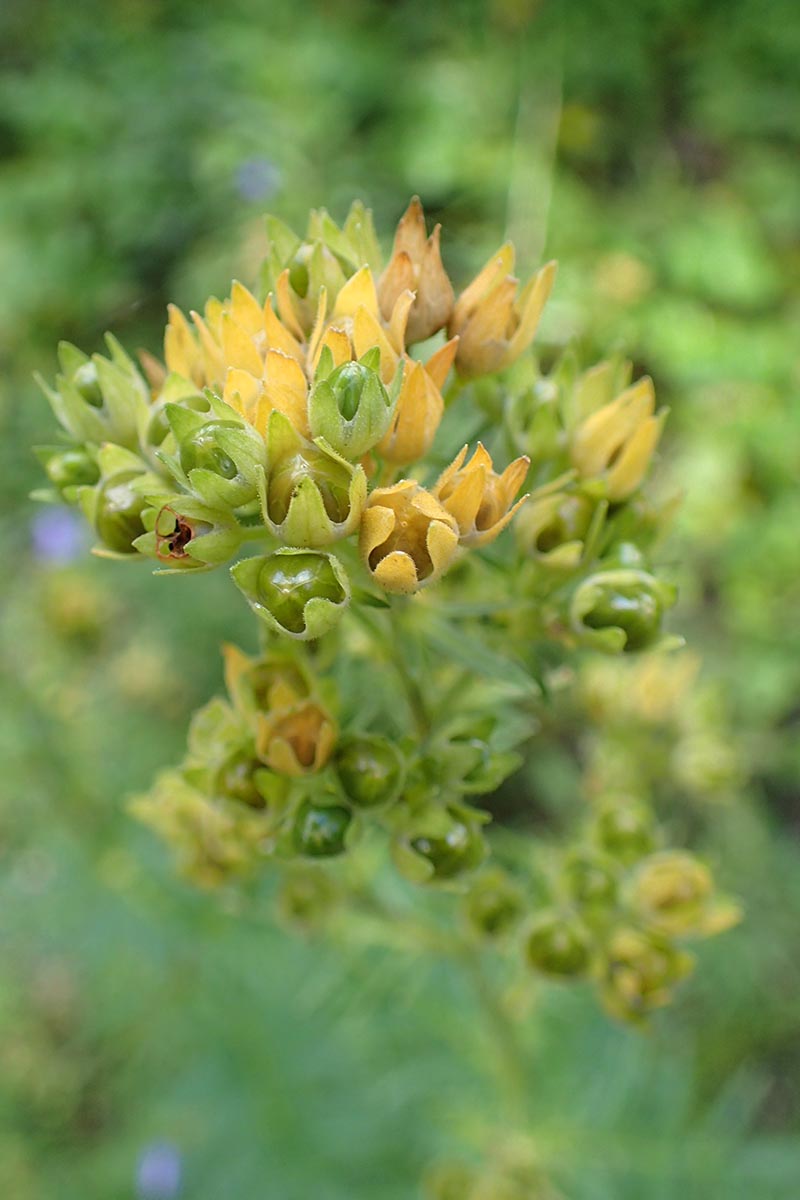
The leaves are arranged in ladder rung-like, pinnate fashion along horizontal stems that are longest at the bottom of the plant.
The leaf stems, or petioles, and main stems may be slightly hairy. The main stems are green or slightly purple.
At season’s end, these herbaceous plants die to the ground.
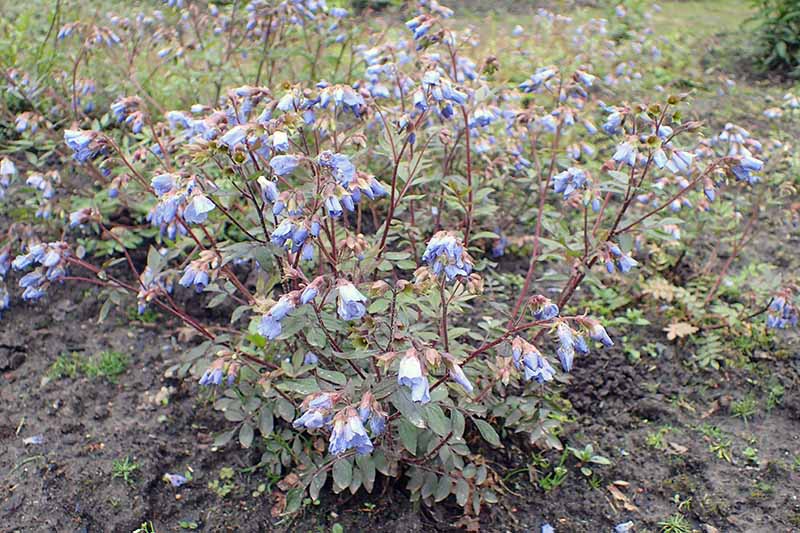
P. reptans may reach heights of up to 18 inches, whereas cultivated varieties of P. caeruleum may grow to a towering three feet.
The tallest types may require staking to avoid excessive drooping.
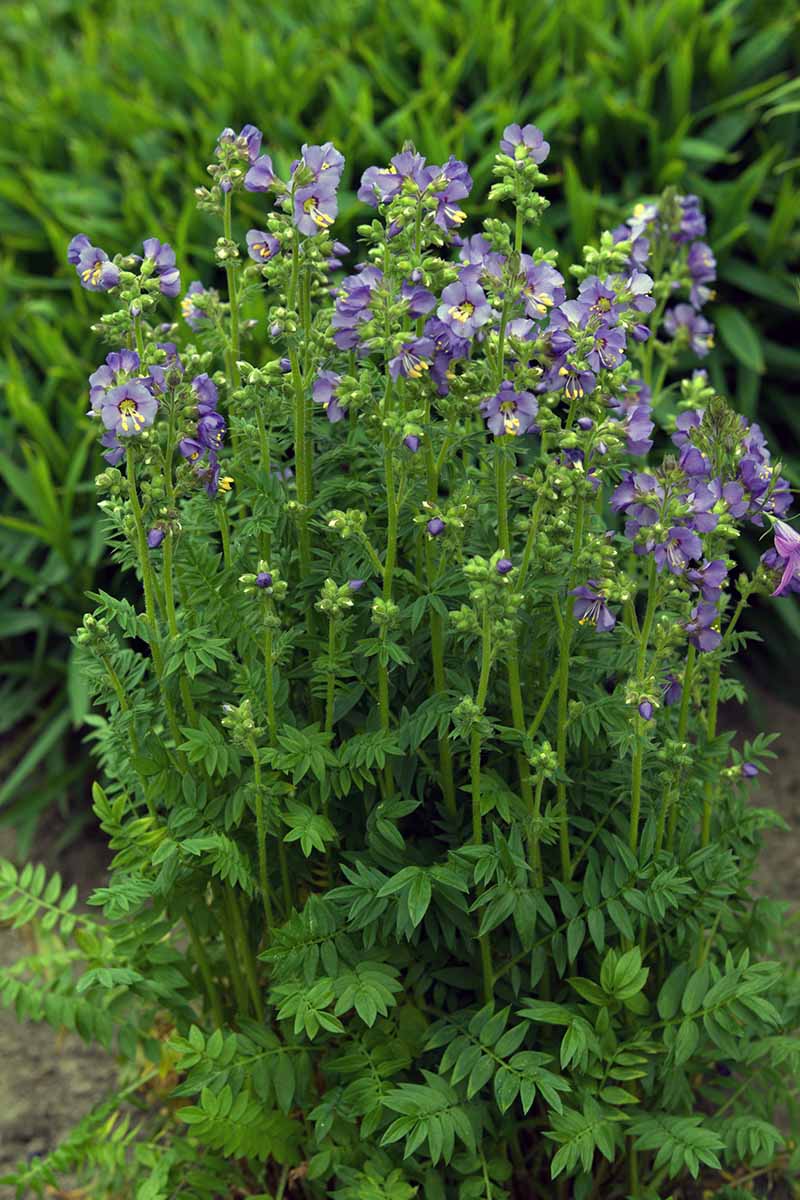
Plants crave organically-rich, well-draining soil with a slightly acidic pH of 6.0 to 7.0.
Happiest in full shade, partial shade is tolerable, especially in the coolest regions.
Bloom times vary by variety, and range from late spring to early summer.
The genus name Polemonium may honor Polemon, the second-century Greek philosopher. And the reference to the Biblical Jacob’s dream ladder from earth to heaven is unmistakable.
Common names for these plants include bluebells, charity, creeping or false Jacob’s ladder, and American Greek valerian.
We make the distinctions here that true bluebells are Hyacinthoides, and true valerian, aka garden heliotrope, is Valeriana officinalis.
Historically, in the United States, P. reptans was also known as abscess or sweat root, and Native American practitioners harvested the roots in the fall to dry and use in treatments for skin conditions, pulmonary complaints, and fever reduction.
It is believed that P. caeruleum was used similarly in its native lands.
Today, however, herbal use has waned, and plants of both types are grown primarily for their ornamental value in the garden.
Jacob’s Ladder Plant Propagation
To grow Polemonium species and cultivars, start with seeds, divisions, cuttings, or nursery pots.
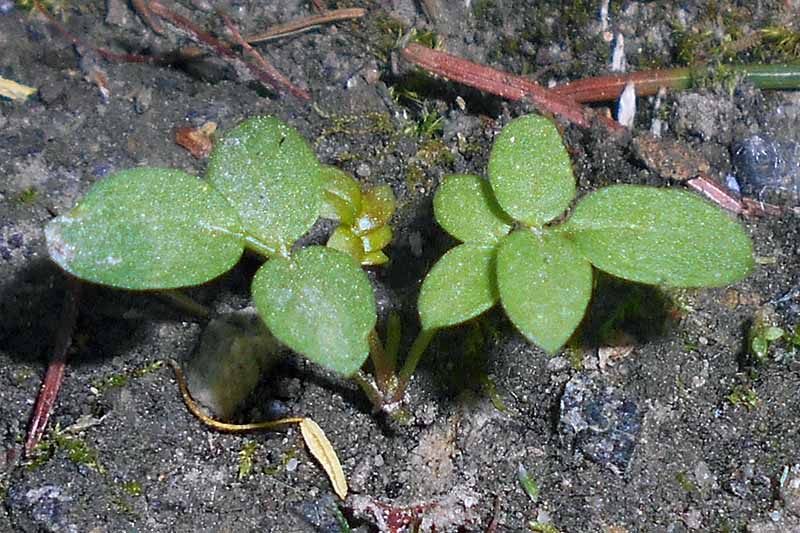
Let’s consider each.
From Seed
Plants are easily started with seeds purchased from a reputable purveyor and packed for the current growing season. Germination takes from 14 to 28 days.
If you grow P. reptans or P. caeruleum in their true species forms, the seeds are usually viable and produce true replicas of the parent plant.
However, if you grow cultivated varieties, seeds harvested from them may not be viable, or may lack the vigor and characteristics of the parent plant.
Start about eight weeks prior to the last spring frost date. Sprinkle several seeds into cardboard egg carton sections filled with sterile potting medium, or seed starter cells.
When the seedlings have one set of true leaves, thin them to one per cell.
After the danger of frost has passed, acclimate the seedlings to the outdoors for a few hours each day.
Transplant them to the garden with 12 to 18 inches of space between them. Detach biodegradable starter cells and plant them in their entirety.
Alternatively, direct sow seeds in the garden after the last spring frost date, or pre-seed the garden in autumn for a jump on next year’s growing season.
By Division
The next best way to propagate is to divide mature plants every three years or so in late summer.
To do this, unearth a clump and slice down through the rhizome to separate it into two or more sections.
Replant the sections as desired, taking care to keep the crown at ground level and the roots buried.
You can learn more about how to divide perennials in our guide.
From Stem Cuttings
Another method is to take soft stem cuttings in early spring to make additional plants, but they don’t always root.
To try it, cut four to six inches down from a growing stem tip, just below a leaf node.
Snip off the leaves, and dip the cut end of the stem in rooting hormone powder.
Place the stem in a container of sterile potting medium. Fresh foliage is an indication of successful rooting.
To transplant rooted stems to the garden, place them in the soil or an outdoor container at the same depth they are in their starter pot.
Alternatively, put the stem cutting without rooting hormone into water and when it grows roots, transplant it directly into the garden in a hole deep enough to cover the new roots
Transplanting
This is the fastest, easiest way to begin.
When transplanting a potted seedling or mature plant from a nursery pot to the garden, work the soil to a depth of six to 12 inches. Carefully remove the plant from its pot and set it into the prepared soil at the same depth it was in the original container.
Whichever method you choose, keep the soil evenly moist. It is essential that it is never allowed to dry out or become oversaturated.
How to Grow Jacob’s Ladder Flowers
To cultivate Jacob’s ladder species in your landscape, choose planting locations that are completely to partially shaded, with moist, well-draining, organically-rich soil.
The ideal pH is between 6.0 and 7.0.
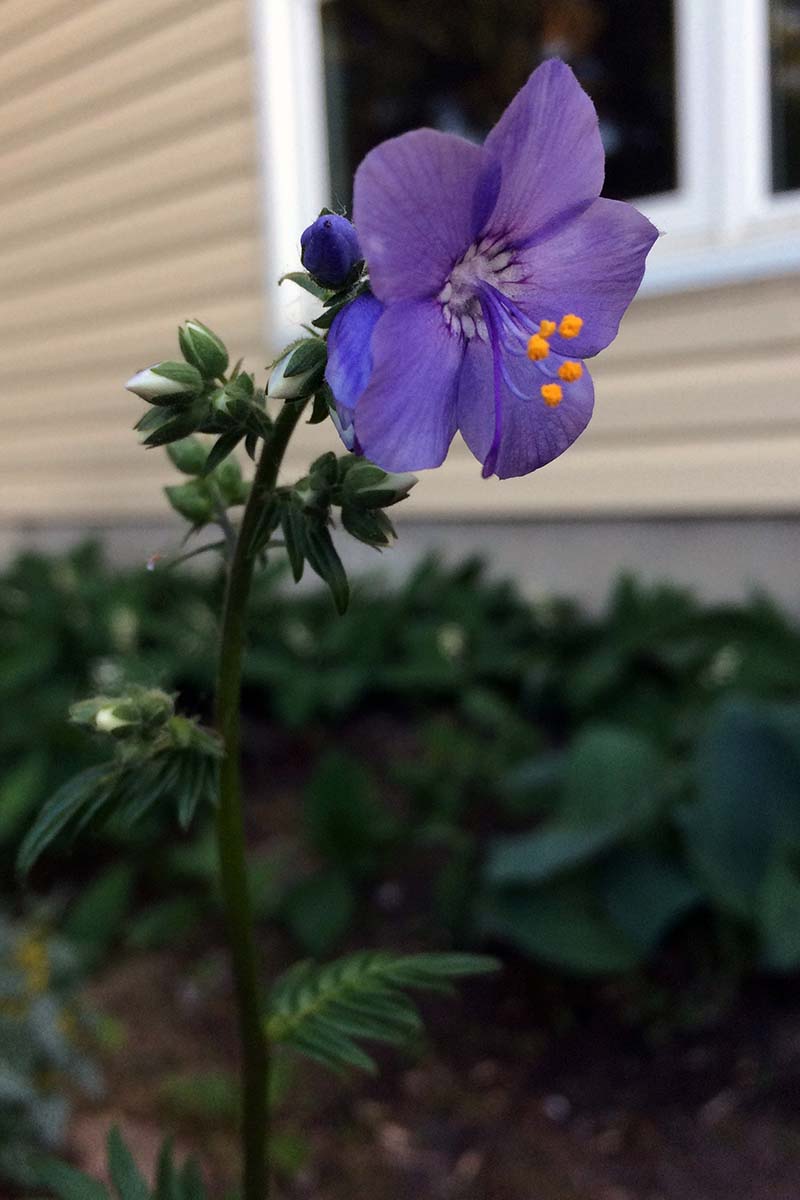
Amend alkaline soil with aged compost to make it more acidic. To loosen and enrich dense clay, mix in equal parts of compost and sand.
Direct sow seeds at a depth of about one-eighth of an inch. Sprinkle two to three every 12 to 18 inches to accommodate mature dimensions and allow for adequate airflow.
Maintain even moisture for the next 14 to 28 days during germination and sprouting.
Thin groups of seedlings to the strongest one when they have two or more sets of true leaves.
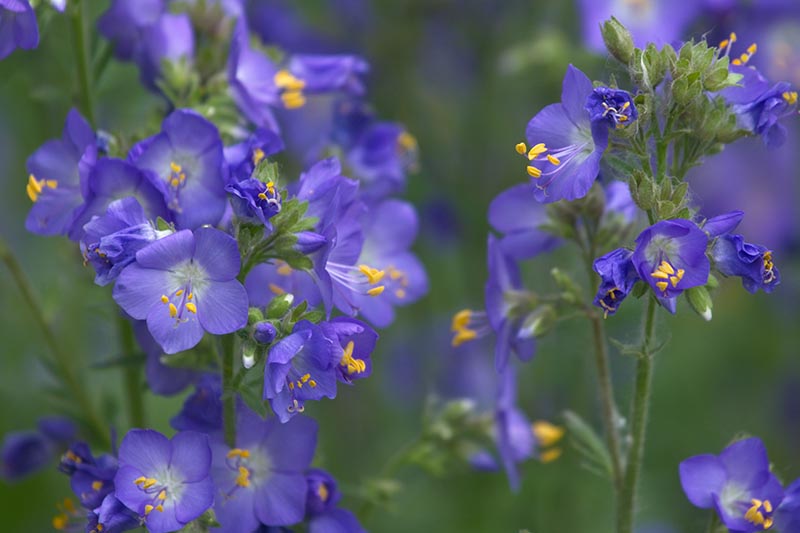
If you like, you can also grow Polemonium in pots for the patio, provided you remember to be vigilant about keeping the soil moist, but not soggy.
Choose those that can accommodate a width of up to 24 inches, with two additional inches to allow room for watering, for a total of 26 inches wide.
Terra cotta pots with good drainage holes are fine. Fill them with good quality potting medium, and place them inside larger, more decorative containers if desired.
Keep plants evenly moist for their duration. Once the foliage dies back to the ground, they no longer require care.
Growing Tips
Whether you grow native P. reptans or non-native P. caeruleum, plants grow best with the following:
- A shady, cool location.
- Seeds that are barely covered with soil.
- Soil that is moist, but not soggy, and never completely dries out.
- Appropriate spacing to allow for mature dimensions and airflow.
Pruning and Maintenance
In a shady location with moist soil and proper spacing, this low-maintenance perennial can take care of itself.
However, you can fuss over it a bit if you like, with supportive actions such as:
- Staking drooping stems to show flowers to their best advantage.
- Deadheading spent flowers by cutting entire stems back to the mound of foliage at their base. This keeps them attractive, limits self-sowing, and may produce a second bloom.
- Removing foliar debris when plants have finished blooming and died back, to prevent creating a breeding ground for pests and disease.
In addition, dividing is not necessary, but as mentioned, you may want to do it every three years or so to make new plants for relocating elsewhere.
Jacob’s Ladder Cultivars to Select
When shopping for seeds and plants, you are likely to come across true species native P. reptans and non-native P. caeruleum, as well as cultivated varieties bred specifically for optimal garden performance.
Plants thrive best in full shade, and can tolerate some sun in the coolest locations. Those with variegated foliage are the least tolerant of sunshine.
Here are a few shade-loving Jacob’s ladder plants to consider:
Pearl White
P. caeruleum ‘Pearl White’ boasts crisp white blossoms on towering stems of up to three feet.
Nothing brightens up dim understories and shadowy corners like white flowers, especially at twilight, when they seem to glow.
Find Pearl White seeds via Amazon in packets of 70+ seeds.
P. reptans
The pale lavender-blue blossoms of P. reptans are attractive and compact atop stems of 12 to 18 inches.
When you plant native wildflowers like this one, you help to prevent their extinction, and protect fragile ecosystems of plants and the wild creatures that depend on them.
Find P. reptans plants available from Nature Hills Nursery in #1 containers, as well as two-by-two-by-three-inch container three-packs.
Stairway to Heaven
The blossoms of the P. reptans ‘Stairway to Heaven’ cultivar closely resemble those of the native species, in clusters of lavender-blue at the terminal ends of 12- to 18-inch stems.
P. reptans ‘Stairway to Heaven’
But the foliage takes this wildflower to a whole new level with green and white variegation tinged with pink.
Find P. reptans ‘Stairway to Heaven’ now from Nature Hills Nursery in #1 containers.
Managing Pests and Disease
Jacob’s ladder is not generally prone to pests or disease. As it is here and gone by midsummer, there are still many insects that are just getting started as it fades from the scene.
However, native P. reptans is favored by the sap-sucking Nasonovia hottesi aphid, and the leaf-mining larvae of two moths, Coleophora polemoniella and Scrobipalpula polemoniella.
To treat, try a firm spray with the hose nozzle to dislodge them, or an application of organic neem oil. Remove affected foliage as needed.
The aphid is always a pest, but the moth caterpillars pose a dilemma, as the larvae consume foliage, but the adult moths are beneficial pollinators. It’s your call, when determining whether or not to take action.
Slugs and snails may pose a problem if the ground is oversaturated, particularly in the deep shade of understory locations. Set traps or hand pick to remove them.
As for disease, if the growing environment is too wet and plants are too close together, there may be fungal growth problems such as leaf spot and powdery mildew.
If you notice leaf discoloration and/or deformity, you may have to remove affected foliage and treat with a fungicide.
And finally, avoid cultivating in bright locations, or you risk scorching the tips of the leaves, destroying them, and rendering plants vulnerable to pests and disease.
Best Uses for Jacob’s Ladder Plants
Polemonium may now be available in a palette of colors, but it is still best known for being one of nature’s rare blue flowers, and a treat to spot in its native woodlands and alongside moist stream beds.
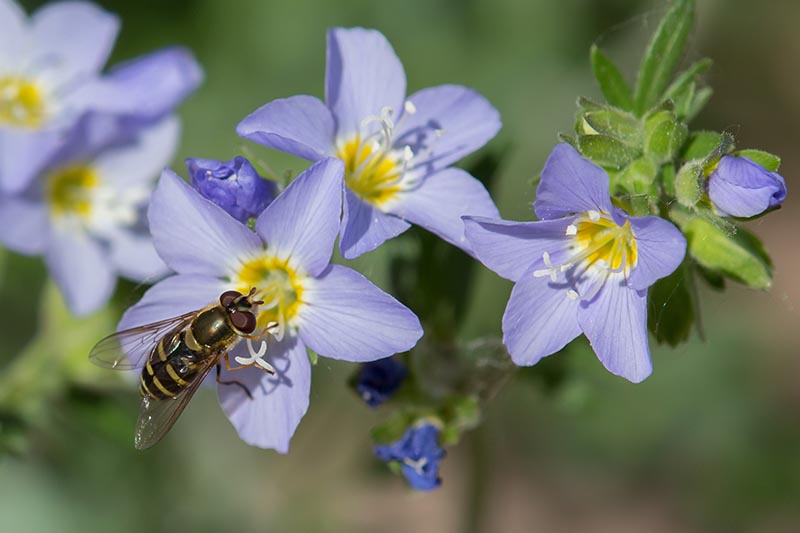
It’s an excellent choice for pollinator gardens and naturalistic settings.
Pot or bed it, and fill containers for the patio, for early-season color that is a fond memory by midsummer.
For companion plants, choose other shade-loving perennials that share its preference for moist, organically-rich soil. Even if they don’t all bloom at the same time, they can grow sociably together for a succession of garden attractions.
Try pairing Polemonium with other ephemerals like low-profile yellow dog-toothed violets Erythronium Americanum, or bicolor columbine, Aquilegia.
Intersperse clumps with flowering astilbe, heuchera, and torenia, or the lush foliage of variegated hostas and silvery-purple Japanese painted fern, Athyrium niponicum var. pictum.
Quick Reference Growing Guide
| Plant Type: | Herbaceous flowering perennial | Flower / Foliage Color: | Blue, pink, purple, white/green, variegated green and white |
| Native to: | Eastern North America, Europe, Northern Asia | Maintenance: | Low |
| Hardiness (USDA Zone): | 3-8 | Tolerance: | Black walnut juglone, deer, dense shade |
| Bloom Time: | Late spring-early summer | Soil Type: | Organically rich |
| Exposure: | Part to full shade | Soil pH: | 6.0-7.0 |
| Spacing: | 12-18 inches | Soil Drainage: | Well-draining |
| Planting Depth: | 1/8 inch (seeds), depth of container (transplants) | Companion Planting: | Astilbe, dog-toothed violet, columbine, heuchera, hosta, Japanese painted fern, torenia |
| Height: | 12-36 inches | Uses: | Beds, borders, containers, naturalistic landscapes, pollinator gardens, shade gardens, understory plantings, woodland settings |
| Spread: | 12-24 inches | Family: | Polemoniaceae |
| Water Needs: | Medium | Genus: | Polemonium |
| Common Pests and Disease: | Aphids, moth caterpillars, slugs, snails; leaf spot, powdery mildew | Species: | Caeruleum, reptans |
Majestic Harbingers
Whether you choose native P. reptans, non-native P. caeruleum, or cultivated varieties, you are sure to find pleasure in tall plants that herald spring and summer’s approach in the darkest parts of the landscape with regal heights, and flowers of blue, pink, purple, white, and new shades likely to come.
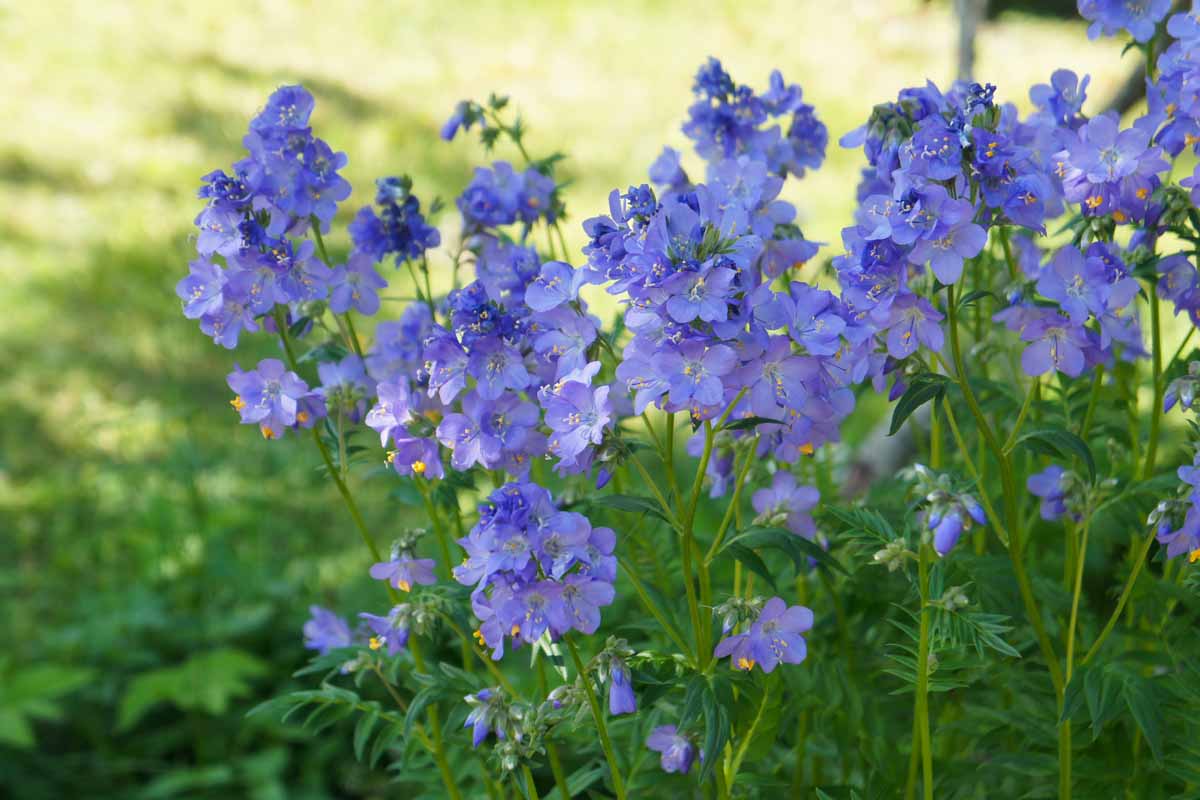
With a host of suitable companion plants, you can create a succession of attractive flora and foliage that brighten the darkest corners and turn them into eye-catching focal points.
Are you growing Jacob’s ladder in your garden? Let us know in the comments section below.
If you found this article informative, you may enjoy reading about these shade-blooming perennials next:
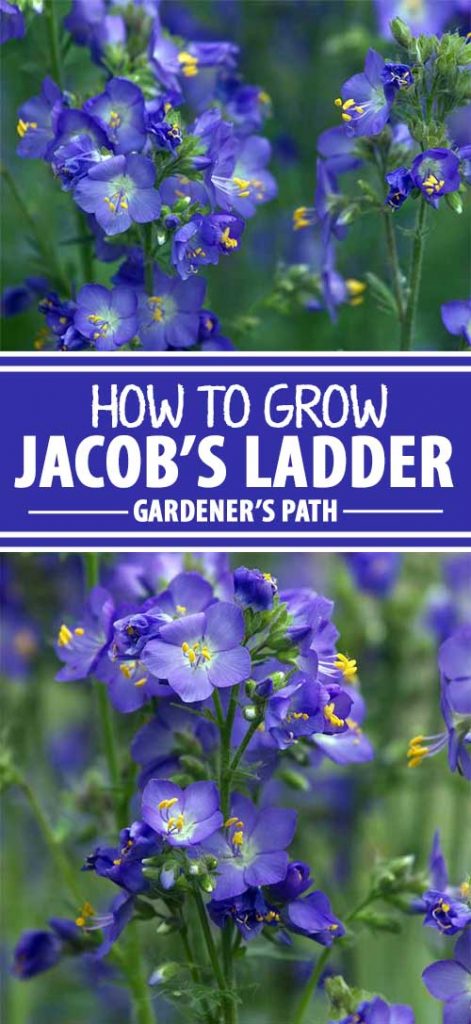
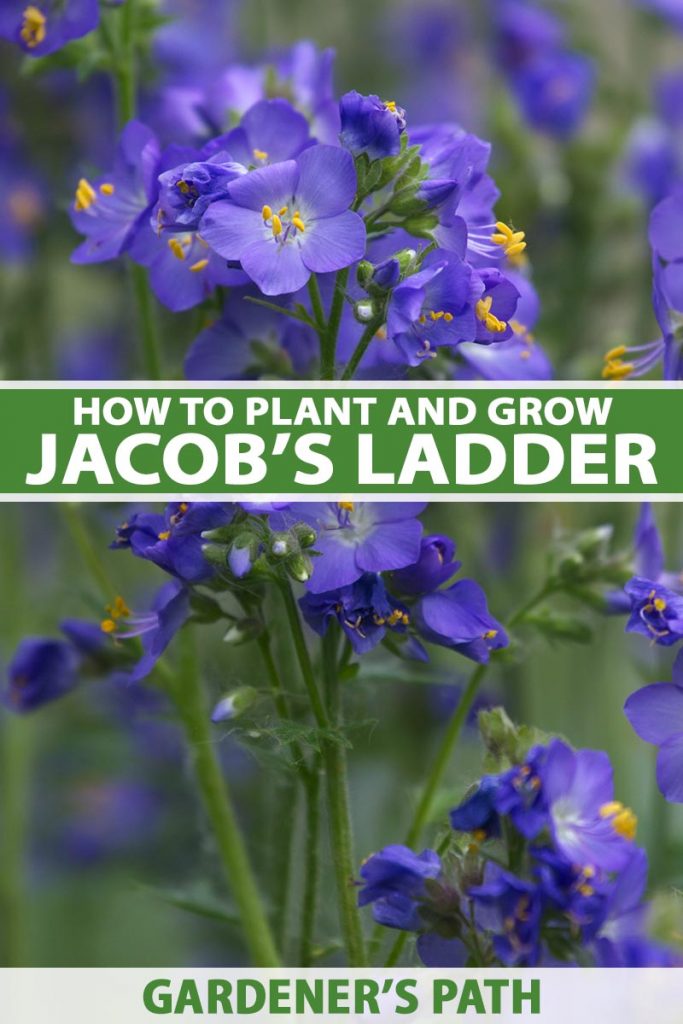
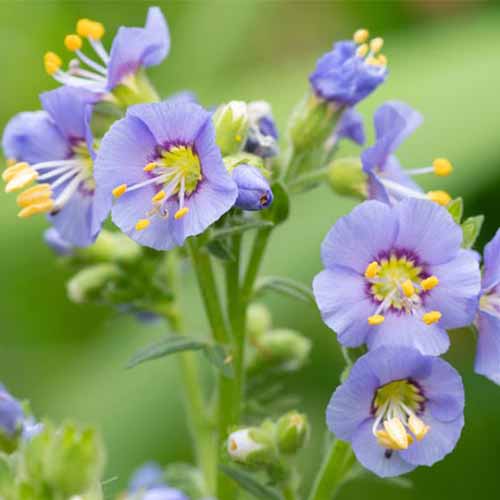
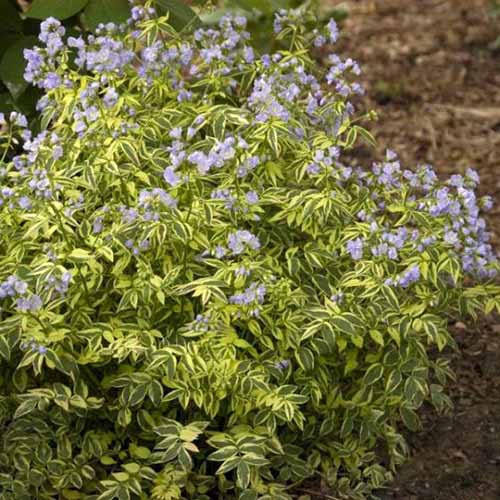
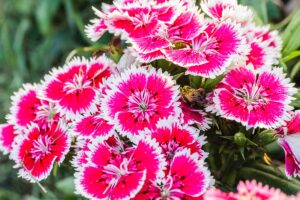
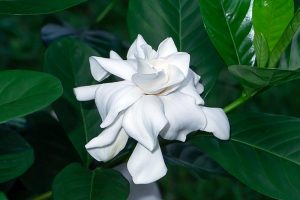
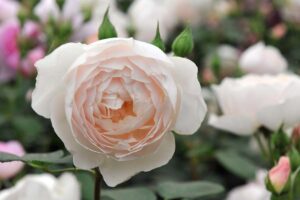
Hi Nan,
I am just starting with a little gardening and have bought Jacob’s ladder plant. I was wondering if I can plant a tassel fern with it in the same pot?
Hello Snehi –
We’re so glad you have taken up gardening! The two plants you have chosen are likely to be quite compatible, as both like a shady placement with moist, organically-rich soil that drains well and is on the acidic side. Best of luck!
Thank you so much Nan.. I am a little overwhelmed with the gardening stuff since I bought a lot plants for the first time.. I have a bag of potting soil.. would you recommend anything more.. I do have liquid fertilizer as well.. would love to get tips on potting.. also can I keep these plants inside the house with Indirect sunlight? Please let me know
Hi Nan, can you please let me know your thoughts on the above? Thank you!
Potting soil, liquid fertilizer per package instructions, and a placement that replicates the shade they thrive in outdoors should get you on the road to success.
Thank you! One more question: How do I make the soil acidic?
The potting medium should meet the low threshold for acidity and be adequate.
You mean the potting soil itself?
Yes, exactly. Jacob’s ladder can do well in a variety of soil types, but it prefers soil that is neutral to slightly acidic, about 6.0-7.0. Amendments like peat can acidify the soil, and you can check your soil’s pH if you like with pH paper or a soil test.
I planted Jacobs ladder 2 summers ago. The first summer it was beautiful. The second summer it returned and looked ok. This year I have nothing. It was planted in a semi shady spot with some morning sun. What happened?
Hi Val – What a shame. Sometimes plants tough it out for a year or two, and then succumb to conditions that are too sunny, hot, and dry. It’s possible that they might have done better in a shadier location with more moisture.
Can I order one and have it sent to LA
Hi Pamela, we don’t sell plants directly, but if you follow the link in the article in the “Where to Buy” section you can order from Everwilde Farms.
Happy Gardening!
I love growing flowers on my lawn! Thanks to this article, it’s very interesting.
Hello fellow gardeners, when I was a newbie, it was frustrating to get any info since it was before the internet days. Doesn’t appear you’ll be getting any direct information from Nan so may I offer up a plan B. Regardless of the plant I always research it by reviewing several YouTube posts and when certain information is repeated I’ll consider it the best info available and use it as the truth. Look into beginning gardening and scan what’s appropriate for your area. You will need to know your planting zone (ie 5a or 8b and the type of soil… Read more »
Hello Katherine –
We’re always happy to hear from our readers and answer any gardening questions you may have. Thanks for your input.
I have planted Jacobs ladder for 2 years, and the next spring, the entire plant is gone! What is eating my Jacobs ladder? There’s a big hole where the plant was, so something is getting it. It’s in my shade garden with hostas and elephant ears, and just disappears over the winter.
Hi Dee –
While slugs and snails will feast on Jacob’s ladder, the disappearance of entire plants, roots and all, sounds like the work of groundhogs. You might try applying a product like Bobbex-R™ Animal Repellent from Arbico Organics. It repels but causes no harm to groundhogs and other garden feeders.